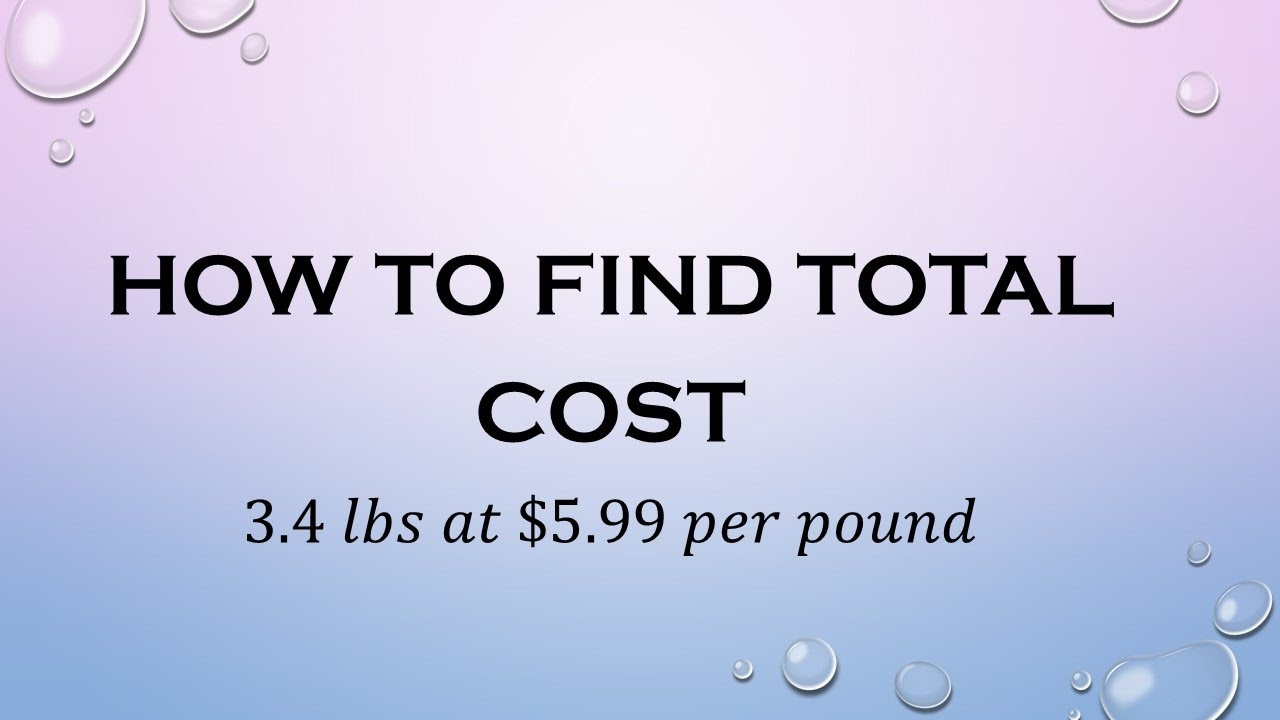When shopping for groceries or other goods sold by weight, finding the best deal can sometimes be tricky. Understanding how to calculate the price per pound can help you make more informed decisions, saving money and ensuring you’re getting the value you expect. It goes beyond simply eyeballing the cheapest sticker price—it’s about understanding the relationship between weight and cost. Let’s delve into some easy methods and helpful tips to work out price per pound, guiding you to become a savvy shopper, capable of sniffing out the best bargains at a glance.

Using a Calculator
Many of us carry mobile phones with built-in calculators, which can be a handy tool for price comparison. By typing in a few numbers, we can quickly arrive at the price per pound.
Detailed Steps:
- Weigh your item: If it’s not already done, weigh the item to determine its total weight in pounds.
- Find the total cost: Check the total price of the item you are purchasing.
- Open your calculator: Pull up the calculator app on your phone or use a standalone calculator.
- Divide the total cost by the weight in pounds: Enter the total cost, press the division symbol, then enter the weight in pounds.
- View the result: The number displayed is the cost per pound.
Summary:
This method is quick and accurate. However, it assumes you have a calculator at hand and that the weight is given in pounds, not ounces or kilograms, which might require additional conversions.
Using Unit Price Labels
Many stores provide unit price labels directly on the shelf, which makes it easy to compare prices without doing any math.
Detailed Steps:
- Locate the unit price: Look at the shelf tag beneath each product.
- Read the unit price: This should be listed in price per pound.
- Compare unit prices: Use these labels to compare various products quickly.
Summary:
Using unit price labels is perhaps the easiest method, as it requires no math. However, not all stores provide these labels, and they can sometimes be inaccurate.
Pencil and Paper
For those who prefer a tactile method or who lack a mobile device, the traditional pencil and paper approach works well.
Detailed Steps:
- Write down the weight and cost: Make sure the weight is in pounds.
- Perform the division: Write the cost above the weight and divide it as you would any other number.
- Round off: If necessary, round the result to two decimal places to make it easier to compare prices.
Summary:
This old-school method is reliable and good for those who appreciate a hands-on approach. It might not be as fast as the digital methods, and it’s prone to human error.
Excel Spreadsheet
Microsoft Excel or similar spreadsheet programs can offer an efficient way to calculate and compare costs over time.
Detailed Steps:
- Open your spreadsheet program: Open Excel or Google Sheets.
- Enter the weight: In one cell, type in the total weight in pounds.
- Enter the cost: In an adjacent cell, type in the total cost.
- Use a formula: In a new cell, type
=, click on the total cost cell, type/, and then click on the weight cell. - Press Enter: The resulting cell will display the price per pound.
Summary:
Excel can handle many numbers and perform calculations quickly, perfect for budgeting. However, it requires access to a computer and basic knowledge of spreadsheet software.
Mobile Apps
There are numerous apps available that can help calculate the price per pound and more.
Detailed Steps:
- Find and install an app: Search your phone’s app store for a price comparison app, and download it.
- Input the details: Follow the app’s instructions to input the price and weight of the items.
- View the results: The app will display the price per pound.
Summary:
Apps are convenient and often feature additional tools to assist with shopping. They may not work offline, however, and they may contain advertisements or in-app purchases.
Adjusting for Sales Tax
To accurately calculate the price per pound, sales tax should be taken into account if it applies to the item in question.
Detailed Steps:
- Determine if tax applies: Check if the item is taxable in your location.
- Calculate the tax: Multiply the cost of the item by the sales tax rate.
- Add the tax to the total cost: Ensure the final cost includes this tax.
- Divide by the weight: Follow the steps outlined in other methods, using the final cost including tax.
Summary:
This provides a more accurate cost assessment but requires additional steps and an understanding of local tax rates.
Estimating Bulk Prices
For items sold in bulk, estimating the price per pound can be more challenging but following a systematic approach can transparently resolve this.
Detailed Steps:
- Estimate the total weight: If the weight isn’t clearly marked, use the store’s scales.
- Record the total price: Sometimes, bulk prices are listed per 100g or a different unit; convert this to pounds.
- Divide the price by weight: Use one of the aforementioned methods to find the price per pound.
Summary:
Estimating bulk prices can lead to great savings, although it’s important to account for the likelihood of slight inaccuracies.
Comparing Different Units of Measurement
When products are labeled in different units of measurement, converting them to a common unit is necessary.
Detailed Steps:
- Convert units to pounds: Look up the conversion factor (e.g., 16 ounces in one pound) and calculate accordingly.
- Standardize prices: Once all weights are in pounds, use one of the methods above to calculate the price per pound.
Summary:
This ensures an accurate comparison between products, but it requires extra steps and may introduce conversion errors if done improperly.
Watching for Promotional Deals
Promotions like “buy one get one free” can affect how you calculate the price per pound.
Detailed Steps:
- Read the terms: Understand what the promotion offers.
- Calculate the total weight and price: Remember to include both items in your calculation.
- Determine the adjusted cost per pound: Follow the previous methods based on the promotional price.
Summary:
This method helps you take advantage of promotions, but it’s essential to ensure the deals are truly economically beneficial.
Mindful Shopping
Simply being mindful about the price per pound can lead one to make better shopping decisions by practicing mental math when comparing products.
Detailed Steps:
- Estimate roughly: Get a rough idea of the product’s weight and price ratio.
- Round numbers off: This can make mental calculations easier.
- Decide based on estimations: Make a decision based on which product seems to offer the best value.
Summary:
Mindful shopping promotes frugality and quick thinking, though it lacks precision and may not be suitable for those desiring exact figures.
In conclusion, understanding how to parse price per pound is an invaluable skill in day-to-day shopping, empowering consumers to make wiser financial decisions and stretch their dollars further. Whether through the use of technology or traditional methods, mastering this simple calculation can lead to significant savings over time. By considering the individual benefits and limitations of each approach, you can choose the method that best suits your needs and shopping style.
FAQs:
Q: Why is it important to calculate the price per pound?
A: Calculating price per pound helps consumers compare prices accurately, ensuring they get the best deals and understand exactly what they’re paying for the quantity of a product.
Q: Can I calculate the price per pound for items that are not food?
A: Absolutely, the concept of price per pound can be applied to any item sold by weight, including hardware, textiles, and more.
Q: What if the store label shows price per kilogram instead of per pound?
A: If the store label shows the price per kilogram, you’ll need to convert the price from kilograms to pounds by dividing it by the conversion factor (1 kilogram is approximately 2.20462 pounds). Once converted, you can calculate the price per pound following the same steps provided for other methods.









